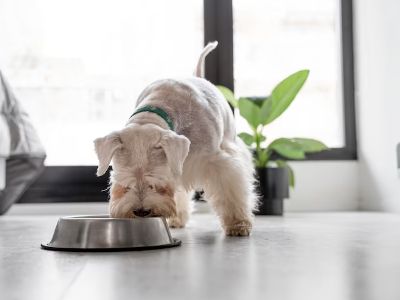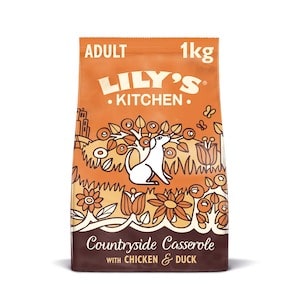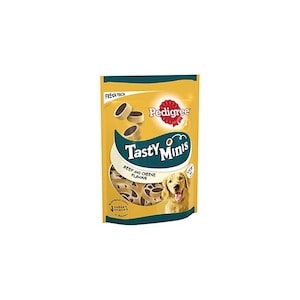In our daily routine, we follow a specific schedule for having our meals for maintaining our fitness. Similarly, our furry friends also need their meals at certain times during the day. Also, a dog’s digestive is different and mandates a precise feeding schedule. So, which is the best time to feed dog?
This is a common query and many dog owners are struggling to find a suitable time frame for feeding their dog. Hence, this article will provide you with the best time to feed dog. You will also get insights into how often you should feed your dog in a day, and what are the benefits of maintaining a feeding schedule for your furry friend.
You Might Also Like:
Best Time To Feed Dog
In general, there is no best time to feed a dog. Yes, you read that right! Because the time for feeding a dog relies on different factors such as age, breed, routine, weight, and so on. So, there is a way after all. Using these factors one can conjure up a feeding schedule which may help their furry friend healthwise.
But, before we get into the details of the feeding schedule, let’s get a general view of – how often should you feed a dog.
How often should you feed a dog?
We saw that there is no best time to feed a dog, likewise, it’s difficult to give an exact answer to this question. However, if you consult with an animal nutritionist or your vet, you will get useful insights on how many times you should feed your furry friend in a day.
Using my experience I have curated some tips that you can consider for outlining a feeding frequency for your canine friend.
- The common suggestion from vets for feeding meals to dogs is two to three times a day. You can alter the frequency but, make sure, it doesn’t compromise your dog’s diet. So, my advice is you should feed them twice a day i.e. once in the morning and once in the evening.
- Providing meals twice a day will maintain your dog’s appetite, and metabolism and reduce the risk of eating less or overeating.
- Use fresh water while providing meals to your dog. It helps with digestion. Also, avoid giving excessive food because it can cause different health issues for your furry friend.
These were some basic tips that you can consider. Now, let’s move on to different factors you need to consider while preparing a feeding schedule for your furry friend and find out the best time for their daily meal.
Dog Feeding Schedule: Best Time To Feed a Dog
As I mentioned earlier, a dog’s age, breed, routine, and weight plays a crucial role in deciding the timing and frequency of feeding them their meals. In this section, I will extend these factors and help you figure out the best time for feeding the meal to your dog.

#1 Feeding schedule as per the age
The feeding schedule for your furry friend will rely on their age. The schedule is almost a mandatory requirement if you have a newborn pup or a young puppy. The reason is simple, at this stage, the food you feed will affect their physical and mental growth. So, here are some specific points you must consider:
- Puppies: while your furry friend is young they are growing fast and so, will require more food. Their energy requirements are high in comparison with teenage or adult dogs. So, you should schedule their meals at least 3 to 4 times a day until they are 6 months old. You can distribute the meal and feed them in the morning, afternoon and in the evening.
- Teenage dogs: for teenage dogs, you can pick early morning and late afternoon as their meal time. Schedule their second meal in such a way that there is a buffer of at least six hours before their bedtime.
- Senior dogs: in the later stages, the digestive system of our furry friends gets weak. You can serve them the meal twice a day like the adult dogs, but, consult the vet before you do so. They will analyse their health and provide you with the meal plan or whether or not you should switch to a single meal per day. Because feeding more may cause digestive issues or obesity.
#2 Feeding schedule based on dog breed
The type of dog you have also plays a crucial role in scheduling their meals. Because different dog breeds will have different energy levels, appetites, and nutritional requirements. Let’s analyse these prospects and see how you can schedule their meals:
- Small breeds: their stomach is small but, their metabolism and energy levels are high. They may ask for food continuously so, you must plan accordingly. You can feed them frequently but, in small quantities. The minimum serving is two and you can extend this to 4 or 5 times. The frequency is high as they need protein, and fat for growth. Chihuahuas, Pugs, and Shih Tzus come in this category.
- Medium breeds: these dogs have a moderate appetite. You can serve them two meals per day. However, they are energetic and have high nutritional requirements. Hence, you can offer them some extra meals. But, make sure you maintain a proper time gap between their actual meal and the extra one. Otherwise, they may suffer from digestive issues or get obese. So, if you have a Border Collie, Golden Retriever, or a Boxer then you can serve them 3 meals per day.
- Large breeds: large dog breeds such as Mastiffs, Saint Bernards, or Great Danes have larger stomachs in comparison with the small and medium ones. Their appetite is more but, their energy requirement is low. So, it’s okay to give them fewer meals as overfeeding may cause bloating issues.
#3 Feeding schedule based on their lifestyle
Your furry friend’s routine or lifestyle directly impacts your meal plan and feeding schedule. Because every canine has different activities and routines. So, you need to make sure they receive their meals according to the intensity of their activity. This means if your dog is used to heavy exercise or is a working dog.
You have to schedule your furry friend’s meal as per their training. Give two meals per day, and if required provide them with additional treats if they exercised more.
#4 Feeding schedule based on their weight
For once, you may exclude any of the other factors but, it’s crucial to consider your dog’s weight while preparing a feeding chart. Here are some steps for a proper schedule using the weight:
- Firstly, you need to determine your dog’s weight. Then use a dog feeding chart or a calculator and outline how much food your dog needs according to their weight.
- Secondly, pick a high-quality feeding item which covers all the necessary nutritional elements. Distribute the food treat so you can feed them at least twice a day.
- Schedule the meals for the morning and evening. If the diet is well-planned, and in accordance with their weight, it helps in managing their appetite, metabolism, and eating habits.
- Adjust their meals according to the changes in their weight. For instance, if your dog has lost some weight you’ll have t adjust their diet. Likewise, on weight gain, you need to make changes in the frequency for controlling your dog’s weight.
Till now we saw different aspects that contribute to outlining a schedule for a dog’s meal. Now, let’s explore some of the perks of serving a dog meal on time.
Perks of serving food on time
If you manage to pick the best times to feed a dog then, your furry friend will have ample benefits. Here are some of the eye-catching perks of serving food on time to your beloved dog:
- Your dog will not face digestive or gastrointestinal issues if they receive their meal on time.
- The calorie distribution is taken care of and this helps in reducing the risk for obesity.
- Feeding food on time helps you to understand their eating behaviour. You will get to know their appetite and preferences.
- You can easily alter the meal according to your dog’s preference and nutrition requirements. This may seem like a small prospect, but, it isn’t. Providing the meal your dog likes helps reduce stress.
- Serving food on time also helps in regulating regular bowel movements. This will also lessen the possibility of a dog suffering from constipation issues.
- Preparing a training schedule or playing time gets easy once, you get to know their eating preferences.
Apart from these perks, the one which stands out is – the emotional bond gets stronger. I’m not kidding! Your dog can sense the gesture and once, their routine is fixed, you will see a change in their behaviour. They can anticipate the timings and will prepare themselves every time before you serve them their meal.
Health Hazards For Dogs While Not Getting Food On Time
While there are no drawbacks to serving food on time, there sure are some potential health hazards for your furry friend if you don’t serve meals on time. In fact, if you skip their meal, or make them eat more than usual, they will suffer from health issues. Let’s have a peek at some of the health issues that your furry friend may suffer:
- Digestive issues
When you regularly provide your dog with their meals at a specific time, they expect the food item each day. So, if you do not serve them the meal or give it to them late, you will see them have digestive issues because their routine is broken. They may suffer from vomiting, bloating issue, gastric problems, constipation, or diarrhoea.
- Obesity
If you feed your dog randomly or allow them to eat more times than usual, they risk suffering from obesity. They may enjoy the extra meal but, you must not make it habitual because obesity can elevate the risk of high blood pressure, arthritis, diabetes, or cancer.
- Bladder stones
This may seem odd but, it’s completely relevant. It’s obvious that you serve fresh water to your dog alongside their regular meal on a daily basis. The freshwater helps in keeping them hydrated and also keeps their urine diluted.
But, if there is an irregularity in providing them with water, they might develop stones in their urinary tract. This will prevent them from passing their urine. Even if they manage to pass some, it will have some blood in it.
- Food allergies
Dogs may suffer from food allergies if you do not maintain their feeding schedule. This is mainly because there is a change in the composition of the food and different time means the weather is also different.
In addition, if you are feeding the same food or different food items without a proper schedule the ingredients may cause an allergic reaction.
- Behavioural problems
We tend to get anxious or furious if we don’t get food on time. The same goes for our furry friends. Once they are comfortable with a routine, a slight shift in their eating routine may trigger aggressive behaviour. This happens because they don’t receive their meal on time.
In addition, if they are served meals on time but, with fewer nutrients or vitamins they could suffer from anxiety, stress, or a decline in their cognitive capacity.
- Dental problems
Irregular feeding can also cause dental problems. This happens because their regular eating habit is disrupted and serving food late may allow bacteria to accumulate on their gums and teeth. They are creatures of habit and prefer their meals on time.
Further, if their meal is served late, they might chew fast and there is no proper cleaning of their teeth afterwards. This can result in plaque and tartar buildup causing issues such as inflammation, tooth loss, or infection. Hence, it’s crucial for you to provide proper food.
- Immunity system weakens
When you are not following the diet schedule of your furry friend, their immune system weakens. Feeding them at random times, may unsettle their digestive system, and cause other issues as well. Also, your dog may also lose their appetite because of late feeding and this can also make its immune system weak.
Further, if you don’t manage the frequency they may also suffer from allergic reactions, infections, or obesity. In an obese condition, a dog’s weak immune system will get weaker and it may lead to other chronic conditions.
- Anorexia
In general, anorexia is a term which is used to refer to many symptoms. It is used for describing issues such as infection, cancer, stress, or depression. But, here we use this term in the context of loss of appetite or food in dogs.
An irregular feeding schedule will often lead to anorexia and your dog may start eating less food. At times, they might even refuse to eat their food. This often leads to dehydration, weight loss, malnutrition, and possibly organ failure. Your furry friend’s immune system also gets weak and they may suffer other diseases.
- Poor skin health
If your furry friend is not receiving their meals on scheduled time, their skin condition is compromised. The lack of nutrients or necessary fatty acids will make their skin and coat dry, dull, flaky, and brittle, and cause excessive shedding of their fur.
Hence, it’s crucial for you to provide them with their meal on time to maintain their fur. Because the food retains some fatty acids which help in maintaining the moisture and elasticity of the skin. It also facilitates the lubrication and protects their skin and hair.
Make sure you provided your furry friend with their meal as per their schedule. This will prevent them from suffering from any health issues.
Feeding Dogs On Time: Tips For Dog Owners

We saw different benefits of feeding dogs on time. As a dog owner, you must follow the dog feeding schedule and feed your furry friends on time. If you are having difficulty following the schedule you make, here are some of the tips on how you can follow it. I have formed 3 phases for making it simpler.
#1 Before feeding
In this phase, you will see different aspects that you need to consider before you actually feed your dog. Consider it as a preparation or prerequisite.
- Pick a quality food item
It’s important you choose a food recipe or treat which meets your dog’s nutritional requirements and personal preference. Store these items properly and avoid any contamination. If your dog likes homemade recipes, you can use vegetables, fruits, or eggs and provide them with their meal accordingly.
- Prepare the food in advance
If you wish to provide the food on time, prepare in advance. This will help you maintain regularity and your furry friend will get their meals on time. Make sure you prepare the food as per your dog’s weight, age and health prospects. Include ingredients which will provide them with protein, fatty acids, minerals and vitamins.
- Measure the quantity
Balance of the ingredients is important for ensuring your dog receives enough calories. Also, you must consult your vet regarding this and prepare a specific diet in accordance with your dog’s weight. In addition, make sure you don’t overfeed or underfeed your dog.
- Time your cooking period
When you are preparing the food yourself, it’s crucial to time the cooking period. This will give you an insight into how much time you need spare for cooking and adjust it as per the schedule of your furry friend’s meal.
For instance, if you plan to feed at 7 A.M in the morning, you may have to start preparing the meal an hour early. You can use a slow cooker or a pressure cooker which helps you cook the meal in time and maintain the warmth as well.
- Set up regular timings
Once you manage to prepare the meal in time, you can set up regular timings for feeding food to your dog. in addition, you can also use an automatic dispenser to ensure the food is served on time. Having this dispenser comes in handy for owners who are commuting daily to their offices and leave their dogs at home.
- Provide a personal space for your dog
Your dog needs a personal space where they can relax and enjoy their meal. It’s crucial for you to provide such an environment. Set up their crate in the backyard or within the house. Provide them with a bowl and also make sure they have fresh water available for the whole day.
#2 After feeding
Here you will find get insights into some specific points that you need to focus on. For instance, not overfeeding your dog. Because it may cause he
- Observe the behaviour
You have to closely observe your furry friend’s behaviour. This is an important step as you get to know whether or not the timing is suitable or not. Your dog may leave some food or not eat at all, this would suggest they are not happy with the food, have some health issue or don’t prefer it during that time.
- Use rewards
If your dog is refusing to eat or not eating at all, you can try and encourage them using some rewards. This will help them know that they will be rewarded every time for eating their meal on schedule. Here you will have to determine which time suits your dog the best. and provide rewards which are irresistible.
- Make feeding fun
Your furry friend will remain eager to have their meal if you make it more fun and exciting. Use toys, puzzles, treat dispensers, and interactive feeding tools to engage your dog even more. This can also help improve their mental health as they will receive the necessary stimulation. In fact, using these feeding tools you can slow down their pace and encourage slow pace eating habits.
#3 Daily monitoring
Your job is incomplete even if you think you have a solid plan scheduled for your furry friend. There is a continuous need for monitoring. You need to assess their stool, their behaviour and see how much changes are required in their diet.
- Monitor eating behaviour
Monitoring their eating behaviour will help you figure out the effects of the meal you served. If there are no signs of anomalies then you can continue with the meal plan and schedule timings. Otherwise, you’ll have to make some changes to their daily meal.
- Flexible schedule
It’s hard to follow the plan regularly because you may have to travel, visit places or your furry friend is simply ill. Regardless, it’s important you keep the schedule flexible. This means, your dog must not feel uncomfortable with changes in their meal time.
You can prepare your dog for such shifts in the timings. This training may help them as there is always a chance of their preference changing. A flexible meal schedule will also help you introduce them to a new food item or one with specific nutritional requirements suggested by the vet.
- Change their training schedule
It’s crucial that your dog’s training schedule doesn’t overlap with their meal time. In fact, it’s important to ensure that your furry friend has had no intense activity or exercise before having their meal or eating their meal.
So, if their training schedule is in close range of their meal time, it’s best you change it. Adjust their training timings in a way you can use their meal as a positive reinforcement after they exercise.
FAQs
Which is the best time of day to feed dog UK?
The best time of day for dog feeding in the UK is around 7 A.M in the morning and 6 P.M in the evening. But, these timings vary as per the type of dog, their age, weight and several other factors. Weather also plays a crucial role. So, if the weather is cold outside, you must pick food with high calories and increase the feeding frequency for keeping them warm. Similarly, in drier or warm conditions, they will need fewer calories and you can feed them early.
Is it cruel to feed a dog once a day?
No, it’s not cruel to feed a dog once in a day. A dogs diet changes as per their age, weight, breed and health condition. So, some owners may have to adjust their furry friend’s diet for their health. Also, there are many studies suggesting that dogs who are fed once daily are less likely to face gastrointestinal issues, liver disorders, kidney problems, or dental issues.
Is 4pm too early to feed a dog?
Feeding a dog at 4 pm is not too early. However, this meal timing is correlated with a dog’s age, weight, breed, energy levels and health condition. Some canines get the benefit of being fed early as they are active in the daytime and prefer keeping their stomach empty at night. The general suggestion from the vet is to keep a 3-hour gap in their meal and bedtime. The 4 pm meal is early for dogs who are used to eating later in the evening.
What is an ideal dog-eating habit meal schedule?
An ideal dog-eating habit meal schedule is one which suits a dog’s preference without compromising its health condition. There is no standard rule for such a schedule but, generally, it’s best to provide the meal twice a day. This will help in improving their metabolism and regulate their digestion and energy levels.
Best Time To Feed Dogs – Final Words
I hope you found some helpful insights and got a tentative idea regarding the best time to feed dogs. If not, you can simply follow a general guideline. The guideline is – to feed your dog in the morning but, not immediately after the dog is awake. Give them some time, allow them to have a stretch and then you can proceed with feeding.
Likewise, feed your dog in the evening but, here make sure you don’t feed them too late and maintain at least a 3-hour gap between the meal and their bedtime. Otherwise, your furry friend may suffer from obesity or worst bloating issue.
Lastly, monitor dog-eating habits and provide them with some breaks if needed. Yes, it’s crucial for dogs to have some break from eating but, whether to allow them to skip meals or not solely depends on their age and their health condition. Hence, it’s necessary to consult with a vet before you allow them to skip meals.






